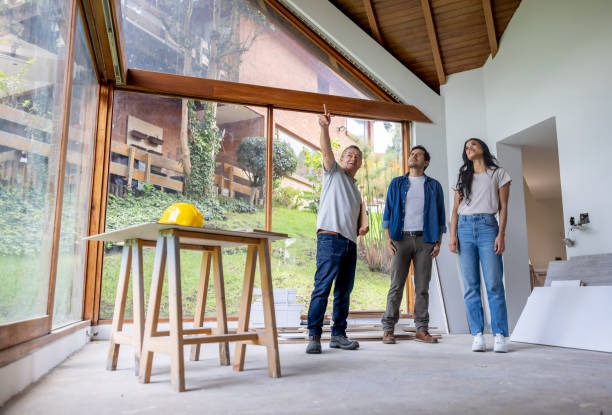How to Budget for New Home Construction: Tips and Strategies
When you’re planning to build your dream home, creating a well-thought-out budget is crucial. It’s about knowing where to allocate funds and foreseeing potential costs. Those embarking on new home construction can find the process daunting, but with the right strategies, it can be manageable and even enjoyable.
1. Estimating Building Costs
Start by estimating the cost of the construction itself. This includes everything from labor to materials. It’s wise to get quotes from multiple contractors to gain a realistic view of potential expenditures. Knowing the average cost per square foot in your desired location can also be extremely helpful.
2. Setting Your Priorities
Determine what features are most important to you. These could range from an energy-efficient design to installing high-end appliances. Setting your priorities early will help you determine whether you can afford to spend more or need to cut back.
3. Creating a Detailed Plan
A detailed plan serves as the backbone of your budgeting process. This should outline every step of the construction to keep your finances in check.
Break Down the Process
List out every phase: design, permits, construction, and finishing touches. Expert home design in Enfield and Elmsdale can help streamline the initial design phase by providing experienced insights, saving both time and money.
Include a Contingency Fund
No matter how well you plan, unexpected costs can arise. It’s wise to allocate a contingency fund, typically around 10-15% of your total budget, to cover these unforeseen expenses.
4 Choosing the Right Professionals
Working with reliable professionals is invaluable in keeping your project within budget and on schedule.
Research and Recommendations
Spend time researching potential builders, architects, and contractors. Recommendations from friends or online reviews can guide you toward trustworthy options. Consider those known for being cost-conscious yet efficient.
Communication is Key
Establish clear communication with your team from the start. Discuss your budget limits openly to ensure they understand and respect your financial parameters. This transparency helps prevent any costly misunderstandings down the line.
5. Monitoring and Adjusting the Budget
As construction progresses, keeping a close eye on your budget helps maintain control.
Regular Check-ins
Schedule regular meetings with your contractors to review progress and expenses. This lets you address any discrepancies immediately and adjust plans if necessary.
Tracking Tools
Utilize budgeting apps or software designed for home construction projects. These tools offer real-time updates and can track expenditures efficiently, ensuring you stay within your set limits.
6. Smart Saving Tips
There are practical ways to stretch your budget further without compromising on your dream home.
Sustainable Choices
Opt for sustainable materials and energy-efficient designs. Although initial costs may be higher, these choices often result in savings over time due to reduced energy bills and maintenance costs.
DIY Where Possible
Engage in do-it-yourself projects where feasible. Simple tasks like painting or landscaping can cut labor costs significantly if handled personally.
7. Understanding Legal and Zoning Requirements
Ignoring zoning laws and permits can lead to costly legal hurdles, delaying your project and straining your budget.
Consulting with Experts
Consulting professionals familiar with local regulations ensure compliance. Engaging in discussions with home builders in Fall River, Nova Scotia, can provide insights on navigating local zoning requirements efficiently, which is essential when planning your budget.
Accounting for Fees
Don’t overlook the cost of permits and fees in your budget. They might seem minor but can add up quickly if neglected.
8. Financing Options
Explore different financing options to find something that suits your financial situation and project needs.
Traditional Mortgages vs Construction Loans
Understand the difference between traditional mortgages and construction loans. Construction loans offer more flexibility during the building phase but often come with different terms and interest rates.
Consulting Financial Advisors
It can be beneficial to consult with financial advisors who specialize in new home construction in Bridgewater. They can provide valuable guidance on the best financing options for your specific project and economic situation.
9. Planning for the Long-term
A well-built home is not just about immediate satisfaction but also long-term sustainability.
Energy Efficiency
Look into energy-efficient solutions like solar panels or better insulation, which can offer long-term returns through energy savings.
Maintenance and Resale Value
Factor in maintenance costs and features that enhance resale value, ensuring your investment continues to be worthwhile long after construction is complete.
10. Incorporating Future Growth
Plan for flexibility and future family needs in your home design.
Flexible Spaces
Design spaces that can easily adapt to changing needs. For instance, a home office can later become a nursery or guest room.
Scalable Systems
Install scalable systems for heating, cooling, and technology. This allows for easy upgrades without major renovations, saving both time and money in the future.
Future-Proof Infrastructure
Consider future-proofing your home with smart technology infrastructure, anticipating advancements that can increase convenience and efficiency over time.
Planning for future growth ensures your home remains functional and valuable as your life evolves.
Final Thoughts
Building your dream home requires careful planning and strategic budgeting. By estimating costs, setting priorities, and choosing the right professionals, you can keep your project on track. Regular monitoring, smart saving tips, and understanding legal requirements further aid in controlling expenses. Considering future growth and scalable options ensures lasting value. With these strategies, you’ll successfully navigate the complexities of new home construction, creating a sustainable and enjoyable living space.


